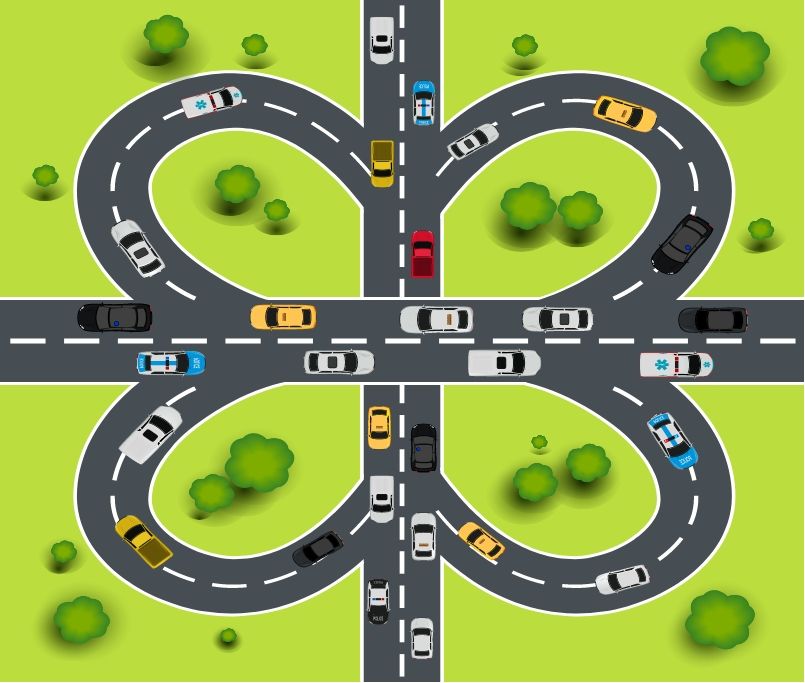Satellite vs. 5G Home Internet: Which is Better for Rural Areas
The next generation of Wi-Fi is here – Wi-Fi 7 promises higher speeds, more capacity, and lower latency than Wi-Fi 6 and 6E. It seems like yesterday when the sixth generation of Wi-Fi was all the rage, and now the seventh generation is ready to take over.

Are you looking to upgrade your Wi-Fi network for improved wireless connectivity? Wi-Fi 7 might just be what you need. However, you cannot spontaneously embrace any up-to-the-minute technology, so let’s discover what Wi-Fi 7 is all about.
What can Wi-Fi 7 offer that previous generations didn’t? Is the investment worth your while? The answers to these questions and more lie ahead.
Understanding Wi-Fi 7
So, what is Wi-Fi 7 exactly? As the name suggests, it’s the seventh generation in Wi-Fi technology, and the successor to Wi-Fi 6/6E. The wireless networking standard for Wi-Fi 7 is IEEE 802.11be, which is referred to as Extremely High Throughput (EHT).
“High throughput” is a measure of network performance that describes the ability to execute tasks quickly. Therefore, one can assume that Wi-Fi 7 can make your wireless networks more efficient and precise than ever.
Compared to the last Wi-Fi generation, Wi-Fi 7 offers:
Fivefold Network Capacity
Reduced Latency
up to 400%
Nearly 5X faster
speeds
Wi-Fi 7 vs. Wi-Fi 6 and Wi-Fi 6E
How does a Wi-Fi 7 router compare to a Wi-Fi 6 or Wi-Fi 6E router? For starters, Wi-Fi 7 utilizes the same frequency bands as its predecessors, i.e., 2.4 GHz, 5 GHz, and 6 GHz bands. Therefore, Wi-Fi 7 routers are essentially tri-band routers; the difference lies in how these routers utilize these Wi-Fi bands.
Learn more about Dual-Band vs. Tri-Band vs. Wi-Fi 6E
Here’s what distinguishes Wi-Fi 7 routers from Wi-Fi 6/6E routers:
Double the Width in Bandwidth
Each frequency band of the router is divided into multiple Wi-Fi channels. The 2.4 GHz band has 14 channels, which are 20 MHz each. The 5 GHz band offers more than 20 MHz channels, which can be combined to form broader channels up to 80 MHz wide.
In Wi-Fi 6/6E routers, the 6 GHz band can have up to 60 channels, and an individual channel can be as much as 160 MHz wide. Wi-Fi 7 routers amplify the potential of the 6 GHz band by extending the maximum width of an individual band to up to 320 MHz (twice what can be achieved with Wi-Fi 6/6E routers).
The 320 MHz Wi-Fi channel can support a greater number of data transmission requests simultaneously at faster rates. You can comprehend the difference by picturing the 160 MHz channel as a two-lane highway, and the 320 MHz channel as a four-lane highway; the latter can handle more traffic efficiently.

Multi-Channel Connection
Wi-Fi 7 routers come with a brand-new feature called Multi-Link Operation (MLO). Older routers, including Wi-Fi 6 and 6E routers, were designed to connect a device to a single Wi-Fi band; you could either manually select the 2.4 GHz, 5 GHz, or 6 GHz band, or let the router choose for you.
With the MLO feature, you can connect a device to multiple bands at a time, which eliminates network congestion and enables faster data transmission. Wondering how this works? It’s like distributing traffic on multiple highways instead of depending on a single one.
More QAM, RUs, and MU-MIMO
Quadrature Amplitude Modulation (QAM) is a technique for sending and receiving data through radio-frequency waves – it’s used to increase data transfer rates in Wi-Fi networks. Wi-Fi 6/6E features 1024-QAM, whereas Wi-Fi 7 gives you 4096-QAM (also known as 4 K-QAM).

Higher QAM allows more bits of data per hertz. When you upgrade from Wi-Fi 6/6E to Wi-Fi 7, you experience up to 20% higher data transmission rates, as each hertz packs 12 bits instead of 10 bits. This enables seamless streaming and online gaming in high resolution (4K/8K).
Multi-RU, Preamble Puncturing, and Advanced MU-MIMO
Wi-Fi 7 is more resource-efficient than the previous generation of Wi-Fi as it allows more resource units (RU) of bandwidth to be allocated per user. Aside from that, the Multi-User Multiple-Input Multiple-Output (MU-MIMO) technology in Wi-Fi 7 routers doubles the number of data streams and overall capacity.
Before Wi-Fi 7, congested Wi-Fi channels would render the rest of the frequency band unusable. Data would pass through primary channels, while the others became unavailable. Preamble Puncturing is a new feature that can split/puncture a Wi-Fi channel, making the previously unusable part functional. This is equivalent to opening up extra lanes on the highway to remove bottlenecks.

Wi-Fi 7 vs. Wi-Fi 6/6E: Key Takeaways
| Wi-Fi Generation | Wi-Fi 6/6E | Wi-Fi 7 |
|---|---|---|
| IEEE Standard | 802.11ax | 802.11be |
| Maximum Speed | Up to 9.6 Gbps | Up to 46 Gbps |
| Maximum Channel Size | 160 MHz | 320 MHz |
| RQAM | 1024 | 4096 |
| MU-MIMO | 8 x 8 | 16 x 16 |
| RU per user | Single | Multiple |
Should I Upgrade to Wi-Fi 7?
Wi-Fi 7 can deliver greater bandwidth, higher speeds, and ultra-low latency; hence, it seems like a practical solution for people who want to improve the performance of their wireless network. However, the feasibility of this cutting-edge Wi-Fi technology for an individual or household is subjective.
When you feel like it’s time to upgrade your connection, you’ve got to consider various aspects. Wi-Fi 7 routers are relatively expensive, so you shouldn’t purchase one unless it complements your internet usage and requirements.
Upgrading to Wi-Fi 7 is recommended if:
1. You’re Subscribed to a Multi-Gig Speed Internet Plan
Wi-Fi 7 routers are designed to support speeds up to 46 Gbps, which is a lot. Someone using an internet connection that delivers basic speeds (let's say below 300 Mbps) would not benefit from the technology. Alternatively, consider upgrading your internet plan or connection type for improved speeds and latency.
2. You Need a New Router
Why not get the latest thing and implement a futuristic approach when spending money is inevitable? Let’s say you’re still stuck with a Wi-Fi 5 router and it needs to be replaced as soon as possible. You could go for Wi-Fi 6/6E, but a Wi-Fi 7 router would be more adaptive towards growing network demands in the next five years or so.
3. You’re Surrounded by Power Users and Smart Devices
Wi-Fi 7 is best suited for data-intensive environments. Techies, entrepreneurs, online streamers, and professional gamers are examples of power users who engage in high-bandwidth activities. Additionally, if you’re part of a big household or organization that relies on a ton of smart tech gadgets, you’ll need a powerful network to keep them all connected and running smoothly.
4. You Own Wi-Fi 7 Compatible Devices
No point in upgrading to Wi-Fi 7 if you lack devices that support the technology and utilize its full potential. Even though Wi-Fi 7 routers are backward compatible, old or outdated devices connected to the network won’t gain anything, i.e., they will perform as per usual.
Examples of Wi-Fi 7 compatible devices are:
- iPhone 16 series
- Latest and high-end Android smartphones like Samsung S24+ and Google Pixel 9 series
- Lenovo: ThinkPad X9 Aura Edition
- DELL Alienware m18 R2 Gaming Laptop
- Sony PS5 Pro
FAQs
How fast is Wi-Fi 7? 
In theory, Wi-Fi 7 can deliver speeds up to 46 Gbps, which is incredibly progressive compared to Wi-Fi 6 and 6E, which are only capable of up to 9.6 Gbps.
Does Wi-Fi 7 provide better range than Wi-Fi 6/6E? 
The indoor range of Wi-Fi 7 is about 230 feet, which is more or less comparable to Wi-Fi 6/6E.
Which is the best Wi-Fi 7 router? 
The TP-Link Tri-Band BE19000 (Archer BE800) is one of the top-rated Wi-Fi 7 routers in terms of overall performance, design, and cost.
What are the benefits of Wi-Fi 7? 
Wi-Fi 7 prevents network congestion, reduces lag/ping, improves wireless network speeds, and makes way for a larger number of devices to connect and run smoothly.

Check for services and offers available in your area




